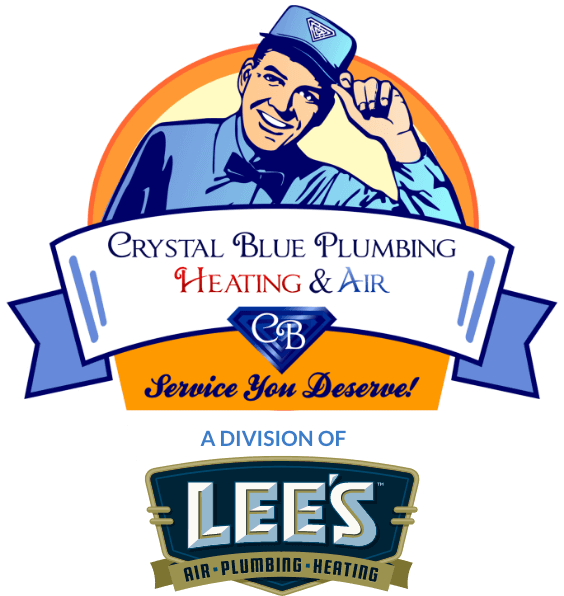Indoor Air Quality Concerns Caused by Wildfire Smoke
Smoke from wildfires can have a profound impact on your Sacramento, CA home’s indoor air quality. If you live in an area that is prone to wildfires, it’s important to understand how this smoke affects your health and well-being so you can take steps to improve your indoor air quality.
Why Is Wildfire Smoke Dangerous?
Wildfire smoke contains fine particulates and gases that are produced when wood and vegetation burn. These contaminants can find their way into your home. The particulate matter is small enough (approximately 2.5 micrometers) that you can breathe it in, leading to shortness of breath, asthma attacks, and cardiovascular issues. It can be absorbed into your bloodstream, causing inflammation, hormone disruption, and potentially raising your risk of certain health conditions with prolonged exposure.
Carbon monoxide is prevalent in wildfire smoke and is produced when wood and vegetation burn incompletely from a lack of oxygen. If you have high concentrations of carbon monoxide in your home, this can cause headaches, dizziness, and even death.
Volatile organic compounds (VOCs) may come from organic materials like trees, plants, and other vegetation as they burn. Exposure to VOCs from smoke can lead to long-term health problems and respiratory issues.
Other pollutants may be present in your indoor air if wildfire smoke is infiltrating your home. This includes polycyclic aromatic hydrocarbons (PAHs) and nitrogen oxides.
Indoor Air Quality Impact
Wildfire will cause your home to smell unpleasant. This odor can linger on your clothing, furniture, bedding, and curtains. It’s often hard to get the smell out by washing the items or airing them out. The air in your home may also feel stuffy and oppressive when wildfire smoke is present.
It’s possible to notice a haze in your home or see visible particles in the air if smoke is coming inside. You may see large amounts of dust accumulating on surfaces.
You may notice that your eyes are burning, your throat feels scratchy, and you’re coughing frequently. These health effects can make it difficult for you to function throughout the day and sleep well at night.
You may attempt to run your HVAC system more frequently to compensate. However, this may just circulate particulates around your home if you’re not taking appropriate steps to filter the particulate matter out.
How Does Wildfire Smoke Come Inside?
You don’t have to leave your windows and doors open for wildfire smoke to impact your IAQ. Enough smoke can sneak through small cracks and gaps to have serious consequences on your air quality. It can also come through your HVAC system if you have a fresh air intake. In this situation, you can switch your HVAC settings to recirculate the air in your home rather than bring in air from outside.
Protecting Against Wildfire Smoke
There are steps you can take to mitigate the risks associated with wildfire smoke. It’s not always possible or necessary to leave your home, especially if the fire isn’t close by. That doesn’t mean your local air quality isn’t a problem. If you do evacuate, several methods can protect the inside of your home from smoke while you’re gone.
Seal Up Your Home
It’s important to maintain a tight seal against the outside. You should keep your windows and doors closed when smoke is present in the area. Seal gaps and cracks around windows, your foundation, and in your attic. You can use products like weatherstripping, caulk, and expanding spray foam.
You can also upgrade your insulation. Insulation with a high R-value promotes a strong barrier between the outdoors and the inside of your home. R-value refers to the thermal resistance of a material. As R-value increases, better resistance is present.
You can add insulation to your attic, basement, inside the walls throughout your home, crawl spaces, around windows and doors, and under flooring. There are several types of insulation available. If you’re looking to protect your indoor air quality from wildfire smoke, consider using something like spray foam insulation. This product is made from isocyanate and polyol resin. The foam will expand and harden once applied, creating a very tight barrier. Closed-cell spray foam is very dense and can provide an R-value of approximately R-6 to R-7 per inch of thickness.
Air Filtration
The filter in your furnace can trap some of the large particulates that circulate through your air and into your HVAC system. You can upgrade this filter by referring to the minimum-efficiency reporting value (MERV) scale. A MERV-rated filter that is between eight and 12 will be somewhat effective against wildfire smoke, especially if it contains activated carbon. Don’t use anything that has a higher rating than your heating and cooling equipment can handle. Airflow restrictions can lead to equipment issues.
For much more effective air quality improvements, you can also invest in a whole-house filtration system to trap more, larger, and a higher volume of airborne particulates. This equipment is installed onto your HVAC system and uses enhanced filtration to trap particulate matter. Most purification units can handle MERV-rated filters of 13 and above.
Home Improvements
There are several home improvements you can make to protect you and your family from wildfire smoke. If your windows are old, consider upgrading them. A design with double panes can reduce the amount of air that comes inside. Make sure your doors have weatherstripping around them. Door sweeps can also be beneficial.
Monitoring Air Quality
It’s not always obvious that the air quality in your home is poor because of nearby wildfires. There are online tools you can use to stay informed. This data allows you to make important changes like closing your windows and running your purification equipment.
If you’re concerned about the presence of particulate matter and other contaminants in your home, you can have an indoor air quality test performed by a professional. Several samples will be taken throughout your home to get an idea of what’s contaminating your indoor air quality. Periodic testing can ensure that you’re making positive improvements that are supporting healthy and safe indoor air quality.
Addressing Humidity
It’s important to pay attention to the level of relative humidity in your home. When indoor air is very humid (above 50% RH), this can cause more particulates to be present in your home. You can remove excess moisture using a whole-house dehumidifier. A smart thermostat can allow you to easily monitor your indoor humidity level so you can adjust accordingly. If there is not enough moisture in your air (under 35% RH), this can irritate your sinuses and airways. The negative health effects of wildfire smoke may be more noticeable.
Our team at Crystal Blue Plumbing, Heating & Air can help you make improvements to your home that will protect you and your family from wildfire smoke. This includes whole-house air purification equipment. We can also perform routine maintenance and repairs on your heating and cooling equipment to ensure everything works efficiently and protects your indoor air quality. Contact Crystal Blue Plumbing, Heating & Air in Sacramento today to schedule an appointment with our team.







